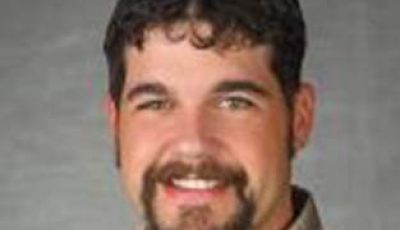Timely tips – Get ready for calving season this month

Garrard Coffey
Agriculture and Natural Resources
Spring-calving Herd
• Replacement heifers should be gaining adequately to reach target breeding weights by May 1. Be sure that their feeding program is adequate for early breeding.
• Overall condition of the cow herd should be evaluated. Cows losing weight now are more likely to have weak or dead calves. These cows will likely be a poor source of colostrum milk for the newborn calf. Feed cows, if necessary to keep them in good body condition.
• Have calving equipment, supplies and labor ready for the spring calving season. Some supplies which may be needed are: eartags and applicator (put numbers on eartags now), tattoo pliers and ink, record book, scales for calf weights, iodine for calves’ navels and colostrum supplement. Calving equipment (puller and chains, etc.) and facilities should be ready and clean.
• Heifers should begin head-start calving in early February. Move them to a clean, accessible pasture, away from cow herd and near facilities so that calving assistance can be given. Cows may start calving later this month. Signs of calving are relaxation of pelvic ligaments, enlargement and swelling of the vulva, and enlargement of the udder. Expect calving difficulty if (1) calf’s head and two feet are not visible, (2) only the calf’s tail is visible, and (3) the cow has been in labor for 1½ hours. Be sure calf is being presented normally before using calf puller. Recognize situations that are beyond your capability and seek professional help as early as possible. Calves that aren’t breathing should receive assistance. Try sticking a straw in nostril to stimulate a reflex or try alternate pressure and release on rib cage. Commercial respirators are also available. Calves should consume colostrum within 30 minutes of birth to achieve good immunity.
• Record birthdate, cow I.D., and birthweight immediately (use your Beef IRM calendar). Identify calf with eartag and/or tattoo. Registered calves should be weighed in the first 24 hours. Male calves in commercial herds should be castrated and implanted as soon as possible.
• Sub-zero weather can mean death for newborn calves. During extremely cold spells, bring the cow(s) into a sheltered area as calving approaches to protect the calf. Be prepared to warm-up and feed newborn, chilled calves. Calving in mud can also cause problems.
• Separate cows that calve away from dry cows and increase their feed. Increase feed after calving to 25-27 pounds of high quality hay. Concentrate (3-4 lb. for mature cows and about 8 lb. for first-calf heifers) may be needed if you are feeding lower quality hay. Supplementation may have a beneficial effect on date and rate of conception. The most important time to feed a beef cow is after calving. Thin cows don’t come into heat very soon after calving. We must have cows in good condition, if we plan to breed them early in the season for best pregnancy rates, especially on high-endophyte fescue pastures.
• Watch for scours in newborn calves. Consult your veterinarian for diagnosis, cause, and treatment. Avoid muddy feeding areas so that cows’ udders won’t become contaminated and spread scours. Don’t confine cows to muddy lots.
• Start looking for herd sire replacements, if needed.
For more information, call the Whitley County Cooperative Extension Office at (606) 549-1430; e-mail DL_CES_WHITLEY@EMAIL.UKY.EDU; or visit the office located at 4275 N. Highway 25W in Goldbug.





